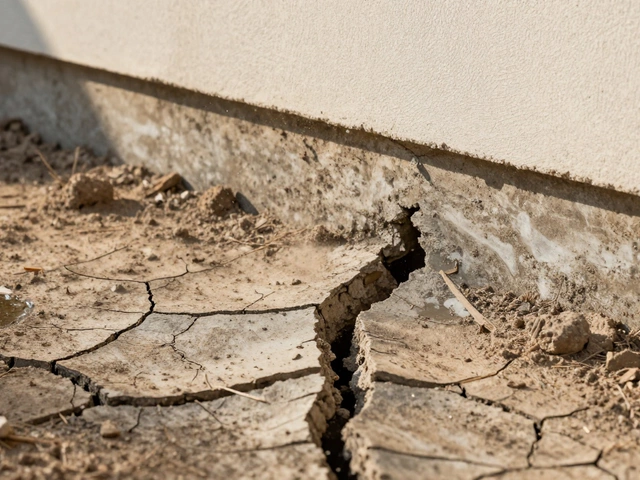
Ever looked at your couch and thought those cushions could use a refresh? Before you jump into choosing new ones, getting the measurements just right is crucial. No one wants to end up with either floppy cushions sliding around or ones that need a wrestling match to fit.
First things first, find yourself a trusty measuring tape. A retractable one works best for this task. You want to know the width, depth, and height of your current cushions. These are the three amigos of cushion measurement, guiding you to a snug fit.
Start by laying your cushion flat on the floor. For the width, measure across the front from one seam to the other. Depth? That's from the front edge all the way to the back seam. And height is measured from the bottom seam to the highest point, usually at the top.
Accuracy is your friend here. Double-check your numbers, jot them down, and keep them handy. This prep work saves you from the headaches of a poor fit later on. Stay tuned as we break down the common pitfalls to dodge when measuring.
- Why Accurate Measurements Matter
- Tools You'll Need
- Step-By-Step Measuring Guide
- Common Mistakes to Avoid
- Tips for Choosing Replacement Cushions
Why Accurate Measurements Matter
Getting the measurements right is more than just a way to save time and money—it's all about comfort and aesthetics. A cushion that's too small can leave gaps, making your couch look worn or tired. Too large, and it will bunch up, feeling awkward to sit on.
Couches come in all shapes and sizes, just like our tastes. A replacement couch cushion needs to fit perfectly with the existing structure to avoid teetering cushions or unsightly sagging. This ensures that the comfort we've come to love remains intact, or even improved.
The Financial Angle
Sizing errors can cost you. Buying cushions only to find out they don't fit means time wasted on returns or, worse, keeping cushions you can't use. Accurate measurements help avoid these pitfalls, ensuring your investment goes to good use.
The Aesthetic Factor
Beyond comfort, proper fitting cushions help retain or even enhance the style of your couch. Think about how it aligns with the rest of the room's style. Consistency here can elevate your space, making it feel more cohesive.
| Common Cushion Sizes | Couch Type |
|---|---|
| 22x22 inches | Standard Sofas |
| 18x18 inches | Love Seats |
The section concludes that every measurement counts. It's the key to ensuring your sofa measurements translate into cushions that fit and function perfectly. Stay tuned for the tools you'll need to make this process a breeze.
Tools You'll Need
Before diving into the nitty-gritty of measuring those couch cushions, let's gather the tools you'll need, because preparation is half the battle.
1. Retractable Measuring Tape
A good ol' measuring tape is your best friend here. Go with the retractable kind—it's easier to handle and gives you the precision you need for accurate cushion measurements. Aim for one that's at least 120 inches long, so you aren’t left in a lurch with large cushions.
2. Notebook and Pen
Jotting things down as you measure helps avoid the mess of misremembered numbers. Use a simple notebook or even a scrap piece of paper. Trust me, it’s a lifesaver to have everything in one spot.
3. Straight Edge or Ruler
For the perfectionists out there, a straight edge or ruler can help ensure your measurements are even and not wonky. This is especially handy for measuring sofa measurements in a straight line.
4. Camera or Smartphone
Take photos of your setup and each measurement you jot down. This might seem extra, but a quick glance at a photo can clear up any confusion later. Plus, it’s a great way to keep a visual record if you’re consulting with a cushion maker or store.
5. Helper
Not exactly a tool, but having someone to lend a hand can make the process smoother, especially if you’re dealing with a large sofa. Their job? Holding the other end of the tape, offering a second opinion, or just providing an extra set of eyes.
With these tools at your side, you're pretty much ready to roll. Accuracy in those replacement couch cushions measurements is critical, so take your time with each step.

Step-By-Step Measuring Guide
Getting those exact measurements for your replacement couch cushions isn't just a task; it's an art of precision ensuring everything looks sleek and snug. We’ll walk you through it, step-by-step, so you won’t end up with ill-fitting cushions.
Gathering Your Tools
Before diving in, grab a retractable measuring tape, a notebook, and a pencil. Having these on hand ensures you don’t lose track of any dimensions.
Measuring the Width
- Lay the cushion flat, making sure it's not compressed or twisted.
- Stretch your measuring tape from the left seam to the right seam.
- Record this number. This is your width measurement. Remember, measure twice to cut once!
Measuring the Depth
- From the front edge, measure back to the exact seam where the cushion meets the sofa back.
- Again, note down the number. Being exact here means comfort later!
Measuring Height
- This might be a bit trickier. Start at the lowest seam at the back, moving up to the highest point.
- Ensure you’re not compressing the cushion to avoid skews in measurement.
Fact-Check Your Numbers
Compare these numbers across all cushions. Consistency is key, and a little deviation can lead to unevenness. If your couch came with a standard cushioning size, you might find your measurements align with those found in common furniture guides below:
| Standard Cushion Type | Width | Depth | Height |
|---|---|---|---|
| Small | 20" | 20" | 5" |
| Medium | 24" | 24" | 6" |
| Large | 28" | 28" | 8" |
So, keep these tips handy. Accurate measurements now could mean the difference between a polished look and a mismatched cushion fail. Let's get measuring like pros!
Common Mistakes to Avoid
Even though measuring for replacement couch cushions sounds straightforward, there are a few common traps folks tend to fall into. Steer clear of these, and you’ll save yourself from headaches down the road.
Overlooking Different Cushion Types
Not all cushions are born equal. Some have hefty backs, some come with sleek profiles. Make sure you know the type of cushion you're working with before getting your measurements. A plain rectangle might seem the same as a 'T' cushion at first glance, but trust me, size and shape make a world of difference in fitting them right.
Forgetting About the Cushion Fill
So you’ve got the width and depth down pat, but forgot about how your new fill might puff things up or down. Certain materials, like memory foam, can alter those dimensions a bit when you’re replacing your sofa cushions. Take note of how firm or soft you want your new cushions, and adjust measurements accordingly. Layering them with batting, for example, can bulk things up by a good inch.
Ignoring Wear and Tear
Wear and tear can subtly change the dimensions of old cushions. They squash, stretch, and might even twist out of shape slightly. Grab a tape and double-check measurements against the frame of your couch if the cushions seem too worn out.
Not Accounting for Fabric Stretch
Fabric can change the game, especially if it’s one that stretches easily. Always ensure that your chosen replacement fabric isn't going to pull too much or hang loose. If possible, test a small piece to see how it behaves when stretched across similar dimensions.
Using Only One Measurement
The world ain't flat, and neither are your couch cushions. Don’t just measure one and assume they’re all the same. Chances are your couch has its secrets—like minor deviations in cushion size. Check each one, just to be safe.
Avoid these slip-ups, and you’re halfway to couch cushion bliss. Remember, each replacement couch opportunity is a fresh start for your living space!

Tips for Choosing Replacement Cushions
Picking out replacement couch cushions can seem like a small task, but it can make a huge difference in your living space. Let's break down a few key points to keep in mind.
1. Know the Fillings
Your cushion's comfort is mostly about what's inside. The usual suspects are foam, down, and polyester fill. Foam cushions are popular for their durability and support, while down gives a plush, sink-in comfort, though it requires frequent fluffing. Polyester is a budget-friendly middle ground, offering a decent level of comfort and bounce. Choose according to your comfort needs and budget.
2. Fabric is Key
Think about the fabric too. Are you after something easy to clean, like microfiber, or are you drawn to the luxury feel of leather? Maybe a robust cotton blend suits your lifestyle best, especially if pets or kids share your couch. Remember, darker colors or patterns usually hide wear and stains better over time.
3. Style and Aesthetics
While comfort is crucial, your couch cushions should match your home decor. Whether you're keeping vibes traditional or very much into that modern minimalistic style, align your choice with the grand scheme of your interior design.
4. Budget-Friendly Options
Replacing cushions can get pricey, so it's wise to set a budget. Sometimes opting for custom-designed cushions within your budget range offers more satisfaction than generic off-the-shelf options.
5. Think About Longevity
Lastly, focus on cushions that promise durability. If possible, check customer reviews or even testing lab results on cushion longevity before committing.
| Cushion Type | Pros | Cons |
|---|---|---|
| Foam | Durable, Offers Support | Can be Firm |
| Down | Comfortable, Plush | Needs Maintenance |
| Polyester | Affordable, Bouncy | Less Durable |
Remember, the devil is in the details. Paying attention to these aspects ensures your replacement couch cushions turn out to be a great upgrade, both in terms of function and flair.




